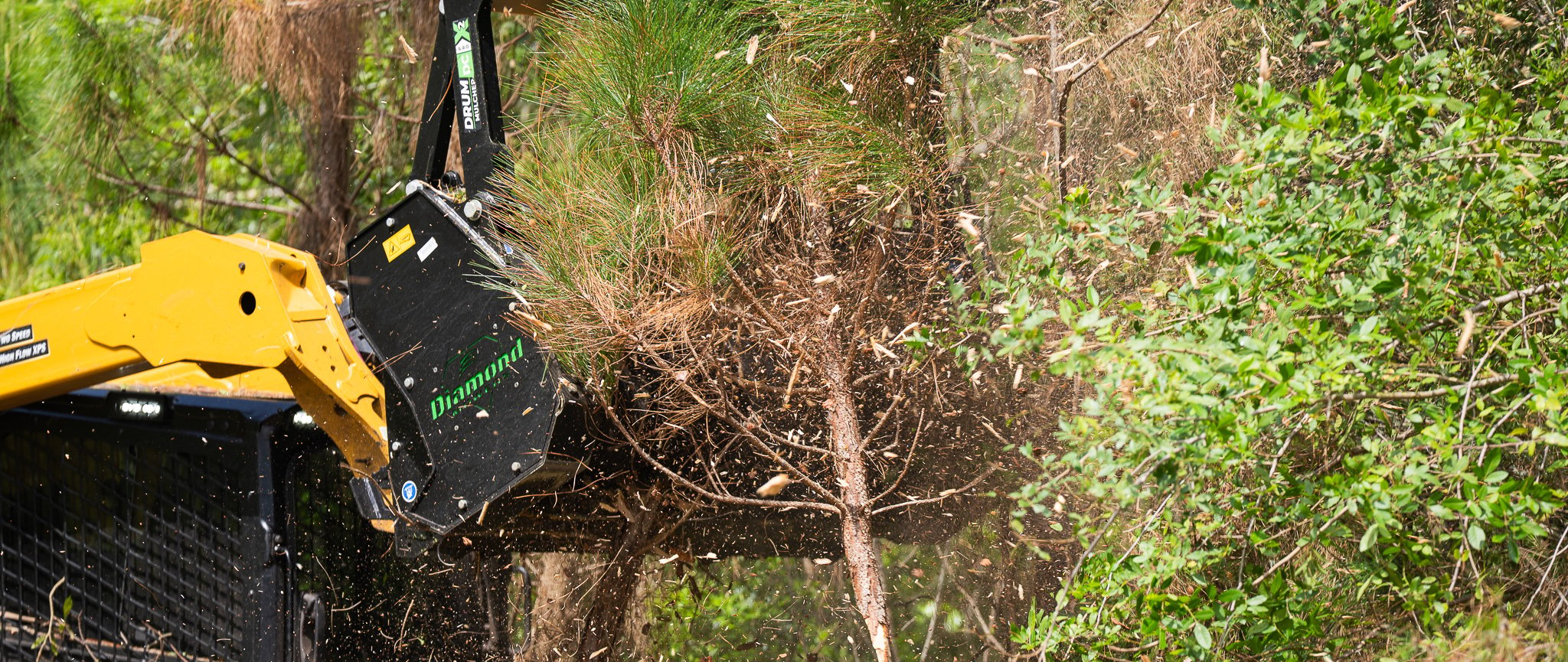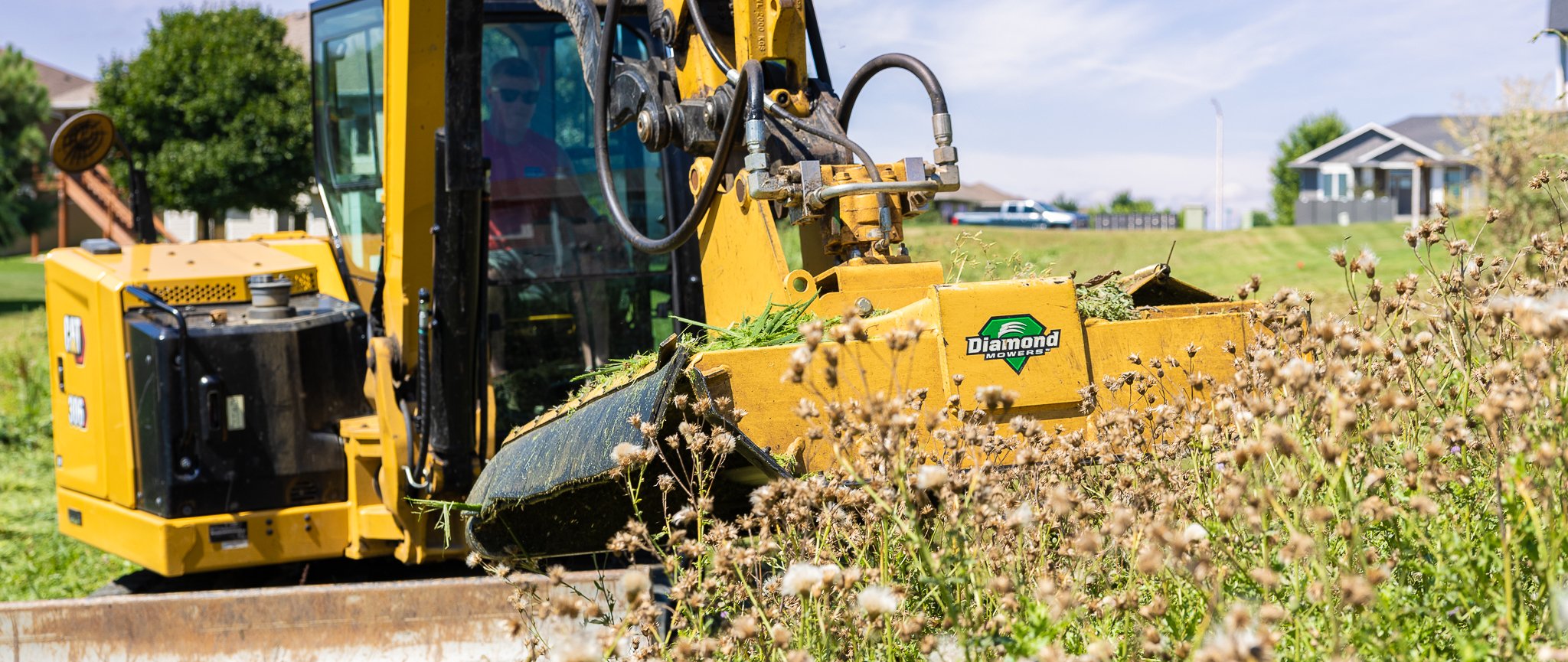Skid-Steer Forestry Disc Mulcher - Deck Shell
Aug 30, 2019 . 2 min read
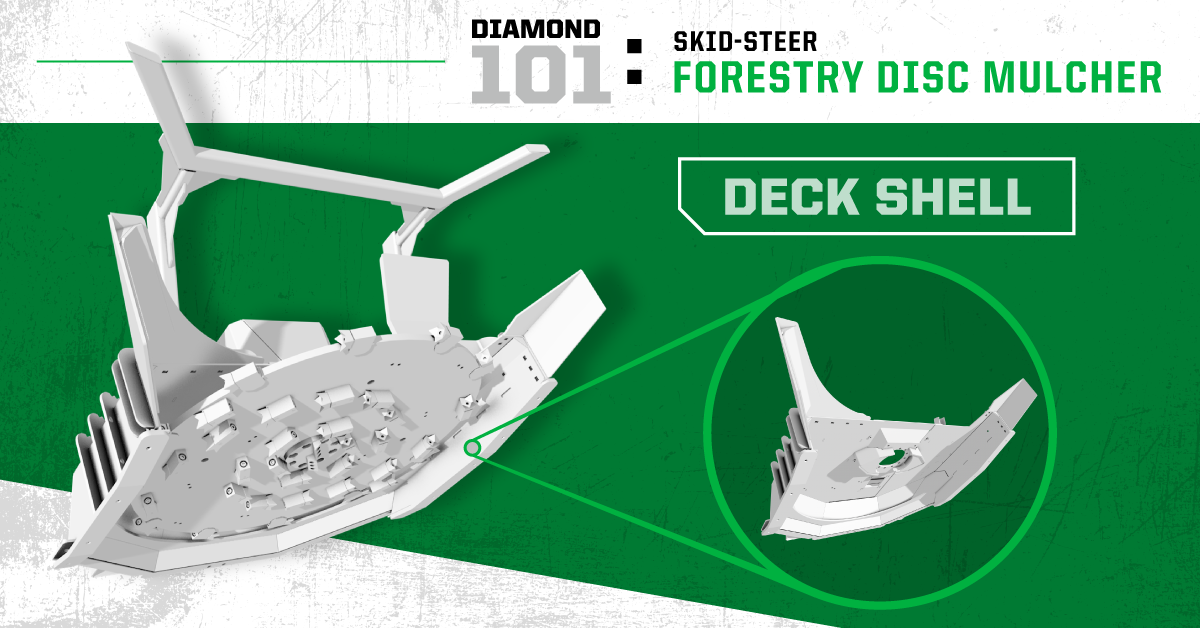
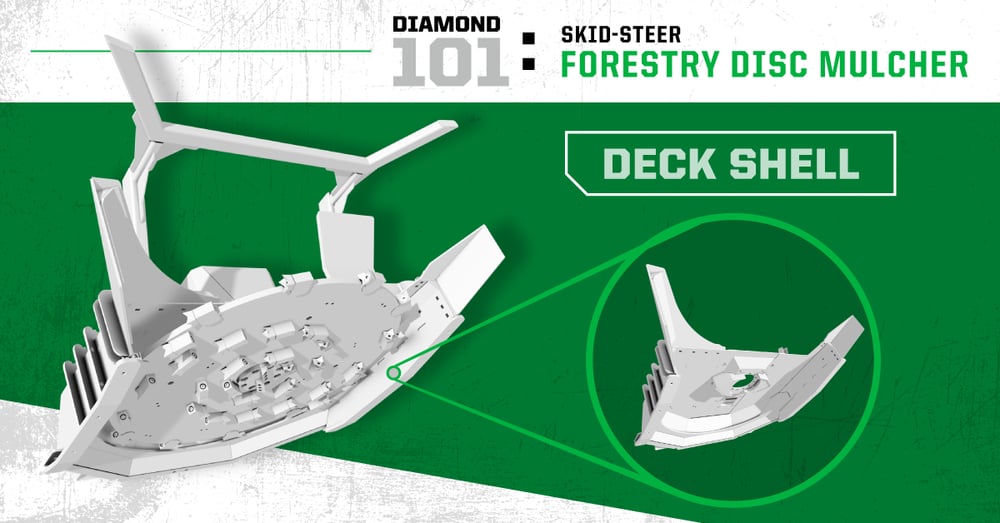
There are five fundamental components of Diamond’s Forestry Disc Mulcher; including the motor, teeth, disc, spindle, and shell. Why did Diamond choose to use these specific components, and why are they successful? Let’s look at the deck shell.
DECK SHELL
The deck shell is responsible for the cut-and-feed operating technique, managing how material flows through the mulching chamber and out the exhaust. It has to be light, strong, and look good doing it.
DESIGN PHILOSOPHY
High strength and low weight are critical to a successful disc mulcher.
By nature, the CG (Center of Gravity) of the attachment is well forward of the skid loader’s quick attach plate, amplifying the weight’s impact on stability. The carriers this attaches to are big and powerful, while the work is aggressive and intense. This combination requires special high-grade steel and careful engineering analysis.
- Too much steel - the attachment becomes very heavy
- Too little steel, or the wrong shape - cracks are soon to follow.
Diamond’s Forestry Disc Mulcher features lateral ribs running width-wise across the attachment to absorb the impact loading associated with feeding a whole tree onto a 1,000 lb. flywheel spinning 1,000 RPM.
CUT-AND-FEED
The cut-and-feed technique is one of the defining operations of a disc mulcher. Not only is this technique highly efficient, but it saves on consumables by limiting the tooth’s contact with the ground.
The design of the deck shell and the way the material flows into the mulching chamber are key to this process. Customized attachments are included for different types of material:
- Narrow chute - Directs a single large stem directly onto the top teeth of the disc.
- Wide chute - Allows multiple smaller branches to enter the mulching chamber.
EASY CLEAN-OUT
A lot of thought went into the top of the deck shell. A flat and smooth design was implemented for easy cleaning to eliminate rust-inducing debris buildup. Wet wood mulch sitting on top of the deck over a long weekend will quickly compromise the paint. The smooth top allows the operator tip the attachment back, bump it a of couple times and get rid of almost all the waste. Foot grips are strategically placed on the smooth surface to ensure operator safety, even in wet or icy conditions.
PUSH BAR
The push bar ties through the deck shell into the quick attach plate. This is a critical design consideration with a tractive effort of a 12,000 lb. compact track loader (CTL).
The placement of the push bar relative to the disc is also a critical design aspect.
From a top view, the push bar is ahead of the disc on the left and right corners to allow the operator to pre-load smaller trees before the disc begins the cut. This ensures the tree falls where we want it to.
In the middle, the disc protrudes past the push bar. This allows an operator to begin a cut into a larger tree before the push bar engages. The CTL then begins to push the tree down as the teeth finish the cut.
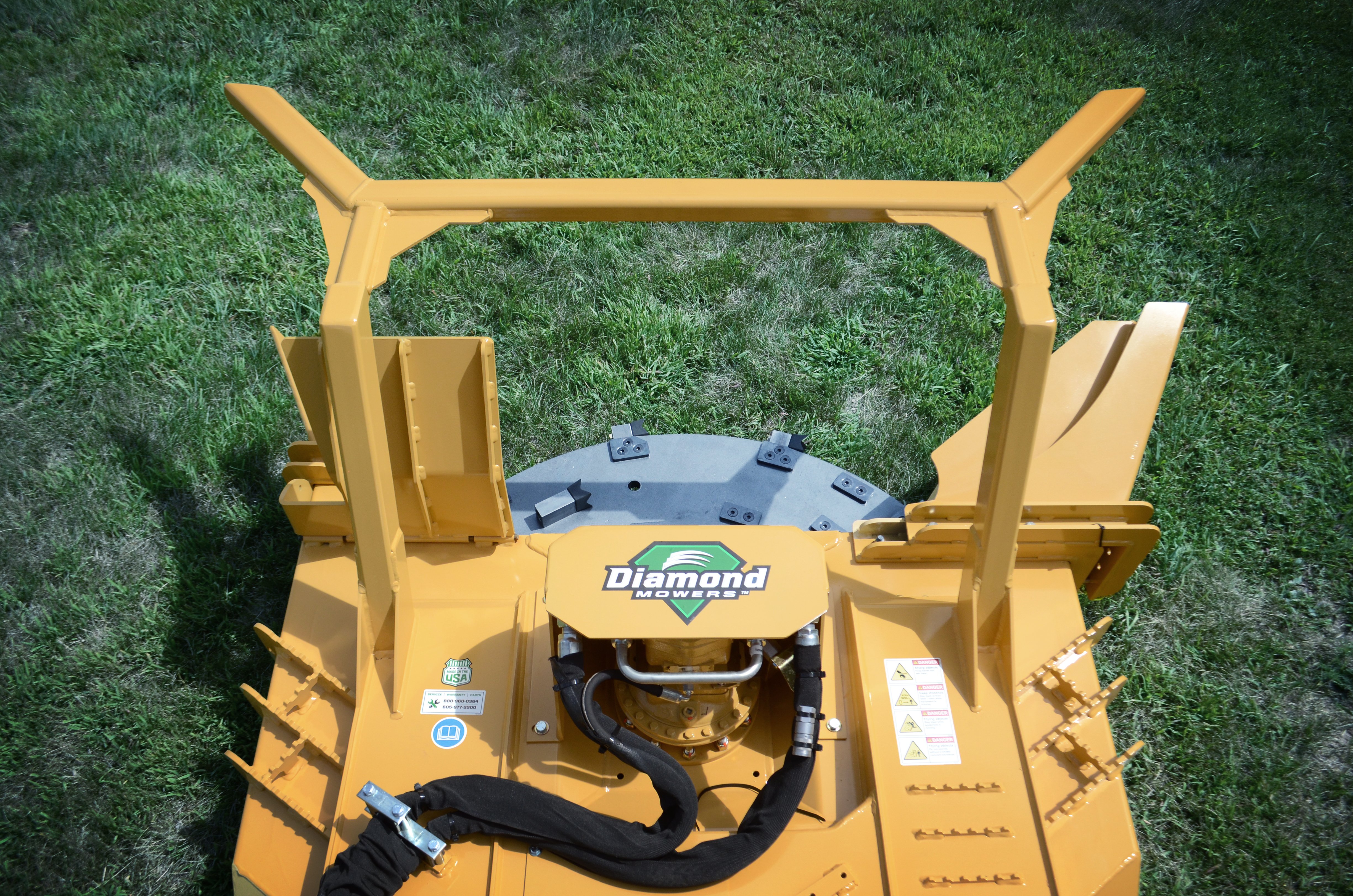
We love to talk equipment, so even if you’re only a little interested in our disc mulcher give us a call (605) 977-3300, or email: info@DiamondMowers.com.
Watch the Diamond Skid-Steer Forestry Disc Mulcher in Action:



